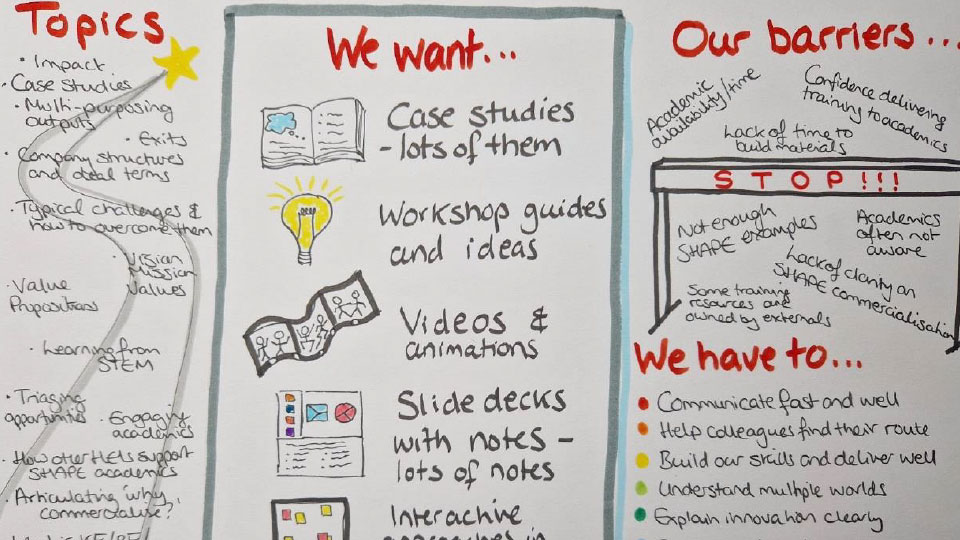What is the value of a social enterprise approach?
A large proportion of university research, especially within the social science disciplines, may have the potential to benefit society, but does not fit within a conventional ‘technology transfer’ approach. If there is no obvious profit potential, then many private sector businesses would not wish to adopt it. However, a social enterprise approach appeals to the public sector agencies who are often the commissioners of our evidence-based programmes. As a social enterprise, our mission is to maximise the impact of research on a cost-recovery basis. This helps ensure that any new intervention does help the people who need it the most, and yet also demonstrates value for money for the tax-payer.
What are the main barriers and challenges academics face when looking to commercialise their research through this approach?
The barriers and challenges for academics are time, expertise and infrastructure. Often, by the time that an intervention has the necessary evidence base to be disseminated to the wider world, the research team have already moved on to new projects. They often do not have the skills or experience to commercialise their research and it is also not the reason that they became academics. They can work with the KE offices, but this again can be time consuming and can be a more convoluted process that would be more efficient to outsource to a specialist organisation that has the knowledge and networks to drive commercialisation forward.
Is there a tension between pricing models and structures when there is a desire to make interventions freely available?
Whilst it is not uncommon for academics to hold the view that their interventions should be freely available, they also appreciate that resource and infrastructure are required to protect the fidelity of their research and increase its reach. The social enterprise ‘cost recovery’ model reassures them that costs are kept low and are targeted at scaffolding interventions with updated high quality materials and built in quality assurance and customer support. Any surplus generated from sales is reinvested into updating and developing a product or intervention. Pricing models are fair, and we have an ongoing relationship with academics which means that they have opportunities to provide input and gain feedback on implementation. For example, the lead academic might chair a project board, ensuring they remain closely involved in the intervention but without the burden of managing the day-to-day operations.
What key factors should academics bear in mind when seeking to do this?
Academics need to be comfortable with an external organisation commercialising their research – even if that is on a not-for-profit, or ‘cost recovery’ basis. A good working relationship between both parties makes it easier and quicker to disseminate the research and to maximise the social impact. Ideally, lead academics should be clear about the fundamental elements of their research which need to be maintained whilst being flexible, if possible, to the needs of potential end users in the real world.
How can we help academics to demonstrate impact – and why is this important?
There are various ways that we can help academics to demonstrate impact, often depending on which stage of the research cycle we are involved with. During the feasibility stage, we have a real opportunity to provide input around the barriers to uptake by potential end users. These will include the cost of the interventions, how sustainable it is, its complexity and, of course, the subject matter. We raise questions to establish how replicable an intervention would be in the real world assuming that the research is successful based on those barriers to uptake.
When we become involved once the research is nearly completion our focus tends to be on how an intervention is packaged to appeal to potential customers. This is in terms of the subject matter, the cost and also the licensing model. We can build in training, quality assurance and documentation to align an intervention to the current marketplace.
For example, we worked with a university which had completed a successful piece of research around restorative justice in schools. It had a good evidence base and had been well received by schools. The academics had some IAA funding and approached us to carry out some market analysis and determine what the next steps and routes to market might be.
We spoke to our networks in both local authorities and schools. There was some discomfort from schools as they felt that the term ‘restorative justice’ implied that the school had significant discipline problems and they didn’t like the association with criminal justice. Whilst they had been incentivised to take part in the research, there was no budget available to pay for an intervention, even if the appetite for it was strong. In local authority commissioning terms, this was also not a financial priority.
We needed to make this intervention more appealing to schools to the point where they would consider investing in it, or the LEA would on their behalf. A side effect of the intervention was that schools experience a reduction in the number of permanent exclusions. Schools are always keen to permanent exclusions and it is something that OFSTED also looks at. An intervention which achieved this had much stronger appeal.
This is an example of how we look at the bigger picture and help academics to see that the route to market may not always be direct, but it is often a case of framing something differently which can really change how it is perceived. Sadly, the COVID-19 pandemic, and the closure of schools in the last academic year, meant we have not been able to follow this through. However, we hope the work we did will help the lead academics decide how to proceed once schools get back to normal and have more capacity to try new ideas.
Photo credit: Rodolfo Clix via Pexels




